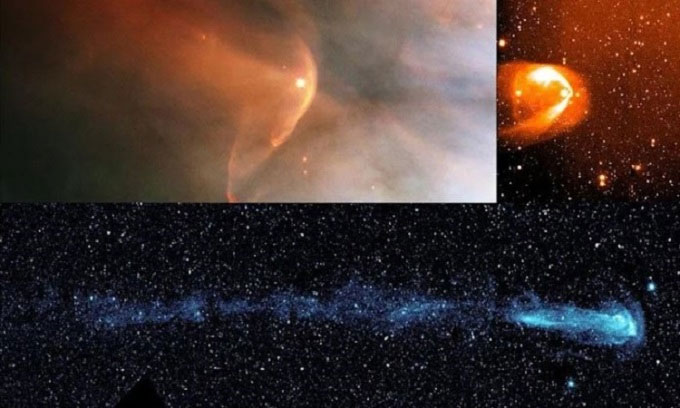Researchers propose the construction of a probe that can travel farther and faster than the Voyager 1 and 2 spacecraft currently operating in interstellar space.

The heliosphere is seen as the boundary to be crossed for the probe to enter interstellar space. (Photo: Yahoo).
Researcher Ralph McNutt from the Johns Hopkins University Applied Physics Laboratory (JHU-APL) in the United States and his colleagues have just published a detailed report on the feasibility of a long-duration interstellar probe. NASA’s legendary Voyager spacecraft are currently traveling through interstellar space, but McNutt’s probe is expected to fly farther and faster, remaining operational for 50 to 100 years after leaving Earth. “Assuming this spacecraft is launched in 2036, it will complete its mission by 2086,” McNutt stated.
The Voyager 1 and 2 spacecraft made history in the 2010s when they left the bubble of hot gas surrounding the Sun, known as the heliosphere, and entered interstellar space, an area primarily composed of particles, dust, and magnetic fields created by other stars. Today, more than 40 years after beginning their journey, Voyager 1 has traveled over 23 billion kilometers, which is 155 times the distance between Earth and the Sun. The original goal of the two spacecraft was to survey the outer planets of the solar system, including Jupiter, Saturn, Neptune, and Uranus.
“The Voyager spacecraft are equipped with many instruments designed to explore planets. However, the spacecraft lacks tools to understand the processes at the edge of the heliosphere,” researcher Elena Provornikova at JHU-APL noted. The proposed interstellar probe is designed to meet this objective.
This is not a mission to another star. The nearest star system is still too far for a probe to reach with current technology. However, the new spacecraft will travel between stars. Designed to weigh 850 kg, the probe will be equipped with sensors to measure parameters such as charged and neutral particles, magnetic fields, and dust. The spacecraft is expected to be launched around 2036 using a heavy-lift rocket. It will take 6.5 hours to travel through the Moon’s orbit and reach Jupiter in 7 months. From there, the vehicle will travel over a billion kilometers each year.
However, the longevity of the spacecraft is a significant issue. Currently, the thermoelectric generators of the Voyager spacecraft are too weak. But with two new generations of nuclear batteries that NASA is developing, the interstellar probe could transmit data back to Earth 100 years later when it is hundreds of kilometers away from the planet.
“4 to 6 billion years ago, the solar system began to form with a magnetic bubble protecting us from dust and plasma. The interstellar probe will not only allow us to understand the current state but also the future ahead,” McNutt said.


















































